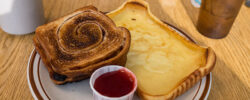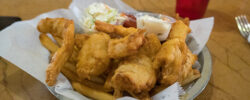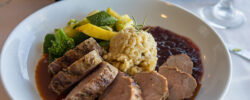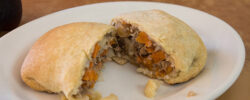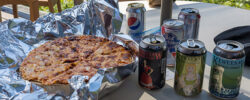Way back in the early days of Offbeat Eats, I discussed the issue of “Pasties” at length. While originating in Cornwall (which still has an extremely active Pasty culinary scene), during the late 19th century, the rapid decline in the Cornish mining industry resulted in Cornwall’s major historical export over much of the last century was… Cornish people, who settled in all sorts of pockets of around the world, with major settlement waves primarily in those regions with mining interests: Michigan’s Upper Peninsula, Minnesota’s Iron Range, Pennsylvania and West Virginia coal mining, and even notable pockets in Mexico, Australia, and Spain. And they brought their culinary traditions with them, adapting them to local ingredients, traditions, and conditions. In the case of the Upper Peninsula of Michigan, the pasty was particularly embraced by the locals, especially with the mining crowds, and got quickly adapted. In particular, the other major expatriate group in Michigan’s Upper Peninsula mining community, the Finnish, adapted it to their own tastes based upon the Karelian Pasty. Tthis is where much of the substitution of carrot for the more Cornish-traditional turnip or rutabaga (a.k.a. ‘swede’) came from, along with some different preferences for crusts. The result is still quite popular; indeed, I remember driving US-2 between The Bridge and Wisconsin, and encountering over 4 dozen places selling pasties along the shore. And there are almost as many varieties: I’ve had flaky crust and firm crust pasties; pasties ranging from ‘moist’ to ‘dry’, spicing between mild and “black pepper bomb”, and everything ranging from traditional Cornish ingredients (hanger steak, rutabaga, potato, onion), to Finnish (either substituting carrot for rutabaga, or omitting it), or even “new” pasties with interesting ing . And the crimp? It ranges from the Cornish side crimp, to a Finnish- or Devon-like top crimp, to even the baseball like “tuck-under”, resulting in a more spherical-like pasty. With that in mind, it was important during our crossing of Michigan’s Upper Peninsula to make sure we stopped at least a few times, and try out a local pasty. In this case, our first stop was in the Western UP, in the quiet town of Wakefield, for pasties from Randall Bakery.

